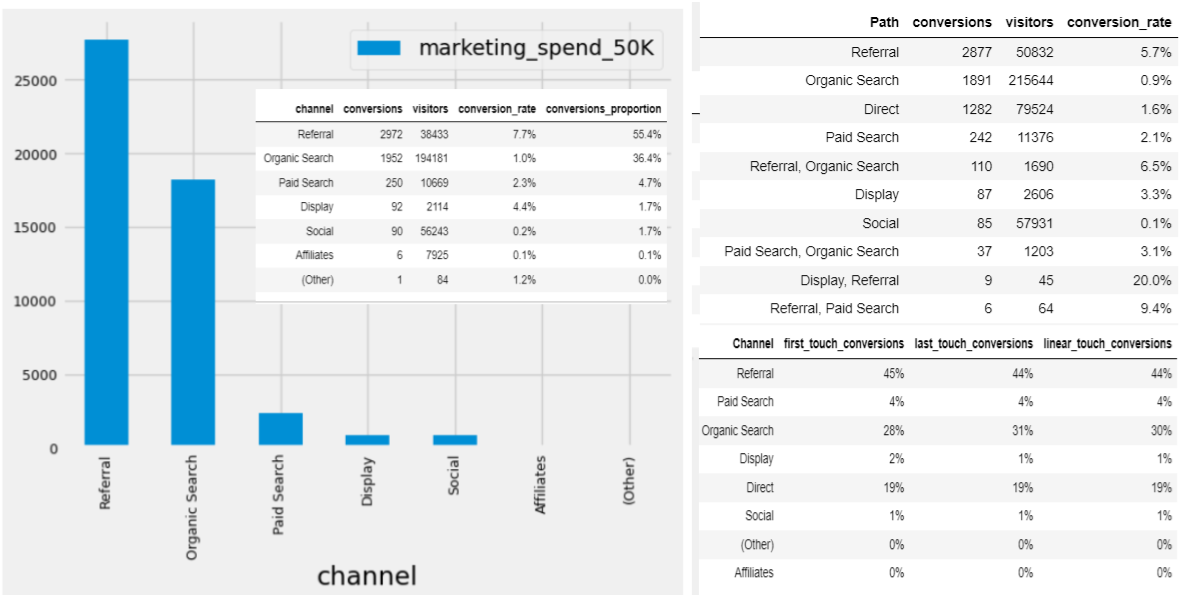How to allocate your digital marketing spend to maximize conversions?
Secret to Maximizing Conversions
Digital marketing companies struggle to maximize conversions. One of the biggest challenges that digital marketers face is budget allocation. With so many different channels and campaigns to choose from, it can be difficult to know where to put their money. This is where channel proportion and channel path analysis using attribution models can help.
Objective
Allocate a $50K digital marketing budget to maximize conversions
Channel proportion and path
Channel proportion is a simpler attribution model that assigns credit to each channel based on the number of times the channel was touched in the customer journey.
Channel path is a more complex attribution model that assigns credit to each channel based on the order in which the channels were touched in the customer journey.
Process

A user visits a website through a paid search ad, then clicks on a social ad to return to the website and make a conversion
Channel proportion: 50% of the credit for the conversion would be assigned to the paid search ad and 50% would be assigned to the social marketing channel
Channel path (first touch): 100% of the credit for the conversion would be assigned to the paid search ad because it was the first channel that the customer touched
Channel path (last touch): 100% of the credit for the conversion would be assigned to the social ad because it was the last channel that the customer used before converting
Channel path (linear touch): 50% of the credit for the conversion would be assigned to the paid search ad and 50% would be assigned to the social ad because both channels lead to the conversion
Analysis

My analysis gives equal credit to all channels that were involved in the conversion path for channel proportion, while channel path attribution models assign credit based on the order in which the channels were used
Conclusion
Based on the analysis, I would clearly spend $27,000 on referrals, followed by $18,000 on organic search, $3,000 on paid search, and $2,000 on others. Best attribution model will depend on the specific business goals and needs. However, by understanding the different attribution models and how to use them, we can gain valuable insights into the customer journey and make more informed decisions about how to allocate the digital marketing budget.